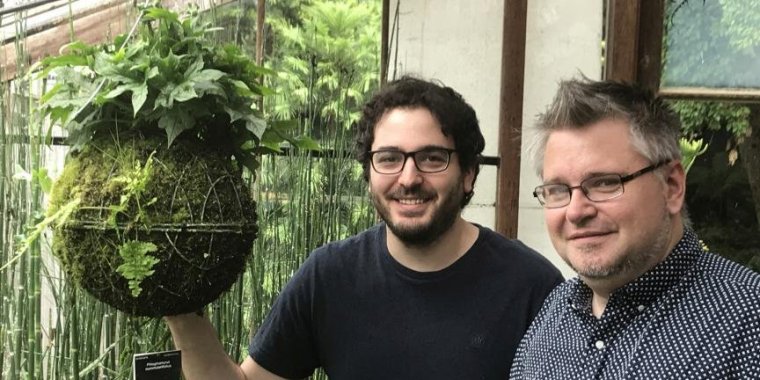| News / Science News |
Ancient defence strategy continues to protect plants from pathogens
Researchers from the Sainsbury Laboratory at the University of Cambridge compared how two distantly related plants – a common liverwort (Marchantia polymorpha) and a flowering plant, wild tobacco (Nicotiana benthamiana) – defend themselves against an aggressive pathogen (Phytophthora palmivora).

Ancient defence strategy continues to protect plants from pathogens. Photo: The Sainsbury Laboratory, University of Cambridge
This is the first time such a comparison has been undertaken. By studying how these distantly related plants – which split from their common ancestor roughly 400 million years ago – respond to pathogen infections, the research team discovered a suite of microbe-responsive gene families that date back to early land plant evolution.
Our current understanding of how plants successfully defend against disease-causing pathogens mainly originates from studying economically important crop plants and a small number of closely-related flowering plant model systems. Very distantly-related plants, such as non-flowering liverworts that are believed to resemble some of the first land plants, are often overlooked. As a result, not much was known about how these plants defend themselves from pathogens or how plant defence strategies have evolved.
Bioinformatics expert identified a subset of one-to-one corresponding genes (single-copy orthologs) in the liverwort and wild tobacco and analysed their level of activity during the infection. A number of different genes were activated in both plants, but a set of metabolic genes involved in phenylpropanoid (flavonoid) biosynthesis were highly activated in response to infection.
These gene families are often associated with the stress-response in flowering plants, providing increased protection against biotic or abiotic stresses caused by chewing insects, pathogens and nutrient or light stress. However, this was the first time that these genes had been functionally linked to pathogen defence strategies in liverworts.
“Pathogen zoospores germinate on the surface of liverworts and eventually colonise the liverwort tissues, but in some areas we saw an accumulation of a purple/red pigment in the liverwort tissues where the pathogen was rarely detected,” said Dr Philip Carella, lead author of the study.
“We produced liverwort plants with mosaic pigment patterns – resembling military camouflage fatigues – that allowed us to compare pathogen resistance in pigmented and non-pigmented areas of the same plant and found the pigment provided some resistance to pathogen infection.”
The enormous diversity of traits and species that we see in modern plants today speaks to the millions of years of evolution that enabled plants to survive in dynamic and contrasting environments across the globe.
Genes involved in fighting specific pathogens can evolve rapidly – both in plants and animals. But scientists have also now found these broadly-conserved genes responding to pathogen infection in very distantly-related plants, which suggests that land plants have retained a likely ancient pathogen deterrence strategy that is much too useful to lose.
“Fossil evidence shows that plants have engaged in close-interactions with microbial life forms throughout their evolutionary history. Our research has uncovered a common set of pathogen-responsive genes shared in early-divergent land plants and more evolutionarily young flowering plants, which are all likely to have been critical for the expansion of plants onto land.
Further comparative studies focusing on other distantly related land plants and their aquatic algal predecessors should reveal even more information about the evolution and role of these vital gene families.” (University of Cambridge)
YOU MAY ALSO LIKE



